Welcome to the NHK: Collection Part One
Introduction
There's a conspiracy keeping me from my anime. What else would explain a certain e-tailer taking over a month to fill my order for Le Chevalier D'Eon. I was hooked when Welcome to the NHK aired last year on the Interweb. ADV put the first twelve episodes on Crunchyroll, and I logged in every week for my next dose of dual episode delight. Unfortunately, twelve episodes were as far as the contract went, and my compulsion to see the story through led me to other means. I think it's the first and only time I've watched a series half in English and half in Japanese. Seeing it all the way through only made me more determined to one day hold the discs in my hands. It all looked so promising too, as at the start of the year ADV UK announced their new acquisitions and top of the list was Welcome to the NHK. I could hardly wait for summer to come around, and with it the first volume. And then ADV disintegrated. In the US, they lost their financial backing, and with it all of their most recent acquisitions. By this time ADV UK had ceased to exist as an independent concern, and ADV releases in this country were being handled through a third party distributor. When the plug was finally pulled, half of their series were left in limbo, and Welcome to the NHK's first volume was never even released. In the US, Welcome to the NHK's DVD release schedule got as far as the penultimate volume before fizzling out. Fortunately for the Americans, last autumn saw Funimation pick up all of ADV's lost licences, and they quickly vowed to complete the outstanding volumes, and release convenient boxsets. At this time, no such panacea for UK anime fans looks likely, with ADV's UK distributor still 'in negotiations' about the hiatused titles. Last December, my impatience finally overwhelmed me, and I put in the order for the two Funimation boxsets. I finally got one over on the sneaky, conspiring, minions of darkness and conformity that hound me.
Conspiracy lies at the heart of Welcome to the NHK, although it may all be in the mind of protagonist Tatsuhiro Sato. Sato is a NEET, he's not in employment, education or training, and hasn't been since he dropped out of college four years previously. In addition to that, he's a hikikomori, suffering from acute social withdrawal. He's basically locked himself away in his apartment, rarely venturing out, and shunning any human contact whatsoever. Fears of failure, rejection and ridicule dominate his life, and he's paranoid to the point of hallucinations, seeing conspiracies against him at every corner. In fact, he attributes his isolated state to the NHK, the Nihon Hikikomori Kyokai, an organisation that through an endless diet of anime, manga and merchandise wants to create a legion of self-loathing otaku in the world. The only human contact Sato has is with his next-door neighbour, even if it is just through a thin separating wall. All day and every day, the same anime theme blares from a stereo, and Sato nurses illusions of going round in righteous fury to confront him, only to chicken out as soon as he gets to his front door. Then one day, there's a knock on the door. Fearing an irate utilities bill collector, Sato actually opens the door. It's his first meeting with a young girl named Misaki Nakahara, and it may be his one chance at a cure.
Funimation presents the first twelve episodes of Welcome to the NHK across two discs.
Disc 1
1. Welcome to the Project!
When the doorbell rings, Tatsuhiro Sato's life begins to change. You wouldn't think that a proselytising woman with her pretty niece could make much difference to a social recluse, but her recruiting pitch is the shameful state of Japan's self-loathing and secluded youth. It's something that brings out a vehement denial in Sato, before a very public breakdown and a flight back to the safety of his apartment. After they leave, the girl returns and posts a note through his letterbox, asking him to meet at the local park. It's the one place outside where Sato feels safe, and curiosity convinces him to meet her. Her name is Misaki Nakahara, and she's chosen him for a project. She knows him, has been watching him for ages, and is fully aware of his emotional issues. She tells him that she will rescue him, will cure him, all he has to do is sign a contract.
2. Welcome to the Creator!
Sato's indignant; he doesn't need rescuing, as he's perfectly fine. The lies continue to build up; he's not a recluse, he's eccentric, because he works from home, he's a creator, he works with computers. The wind's taken out of his sails when Misaki challenges him to prove it. Back in his apartment, wallowing in self-loathing, Sato finally loses it with the constant music from next door, and actually confronts his neighbour. Only his neighbour turns out to be Kaoru Yamazaki, a friend from high school he once rescued from bullies. Yamazaki throws Sato a lifeline. He's in Tokyo, studying computer game design, and if Sato can help him create a game, then a lie will be made truth, and Misaki will have to accept Sato's creative genius. The trouble is that the only games simple enough to make in a short timeframe are erotic games.
3. Welcome to the Beautiful Girls!
When it comes to computers, Sato's talents definitely lie elsewhere. Yamazaki says he can take care of the rest, all he needs from Sato is a story, a scenario that the player will follow while trying to woo his digital companion. To give him an idea, he lends Sato several of his favourite gal-games, and a CD of his porn collection. Sato starts playing the games and surfing the web for more inspiration. A week passes, a national Kleenex shortage ensues, and Yamazaki realises that Sato needs a sharp shock, or the game will never be made.
4. Welcome to the New World!
With no script forthcoming, Sato believes he needs more experience with girls. Yamazaki reminds him that the sort of people who play these games don't want real girls, they want the docile, submissive, fantasy. With 10 days until his next meeting with Misaki, time's running out, and inspiration is required. Yamazaki drags Sato out of his front door and takes him to otaku heaven. He takes him to Akihabara. With maid cafes, fan comic shops, figurines and DVDs, Sato is beginning to see the light. Only he isn't expecting to see his upperclassman from high school, Hitomi Kashiwa
5. Welcome to Counselling!
Hitomi was the one who introduced Sato to the idea of the conspiracies directing their lives, and she also introduced him to more adult things, albeit on her last day of school. She isn't surprised to see that Sato's now a recluse, although her life seems far from ideal when she reveals a veritable pharmacy of mood altering medication in her handbag. She says she wouldn't mind seeing Sato again, and surprisingly, Sato wouldn't mind either. But he realises that just making a computer game isn't going to help him start socialising again. It's time to come clean to Misaki, and sign the contract. Session 1 of her curative treatment ensues, psychoanalysis.
6. Welcome to the Classroom!
Sato convinces himself that as long as he's doing something productive, he's not a hikikomori. Yamazaki is surprised when he remains committed to completing the game, even if he no longer has anything to prove. Meanwhile Session 2 concentrates on Sato's conversational abilities, or lack of. Misaki has a foolproof way of getting him talking to people again, although it is a tad unconventional. It's when she mentions in passing that Yamazaki has a girlfriend that she gets Sato's interest. How can a game otaku that collects little plastic models of female anime characters have a girlfriend when he himself doesn't? The only way to find out is to follow Yamazaki to his college and spy on him.
Disc 2
7. Welcome to the Moratorium!
You'd think that venturing out into the real world would be a big step forward, even if it was just to spy on his next door neighbour, but for Sato it's been a step back. His confidence is so low that he has spent the last week locked in his apartment, refusing to open the door or answer the phone. Then his mother phones. She's coming to Tokyo for a visit, and she wants to see her son and have a heart to heart chat about his future. It may be time for him to move back home and find a wife. That's the last thing Sato needs, so he has just two days to find a job and a girlfriend to impress his mother with his independence. He'll have to lie of course.
8. Welcome to Chinatown!
Yamazaki is manning the phone as the boss of the firm where he works, and Misaki is on his arm as a girlfriend/potential wife, but Sato's missed the message where he has to pick his mother up from the airport. He's frantically cleaning his apartment of 'research material' when his mother knocks on the door. Fortunately, though she's not impressed with his choice of reading, she absolutely adores Misaki, and the three head off to a restaurant for dinner. Sato and Misaki embark on their poorly rehearsed sham, but Sato's mother sees beyond the theatrics and instead sees something promising in Misaki. When she says her goodbyes, Sato and Misaki suddenly find that they are on a real date.
9. Welcome to a Summer Day!
It always boils down to relationship issues. Sato's having a hard time concentrating on anything following his 'date' with Misaki, and it's beginning to interfere with his work on the game. It isn't good for Yamazaki, who wants something to present to the public at that summer's Comic Market at the beach. Yamazaki has his own relationship issues to resolve, and the forthcoming midsummer fireworks festival, which is usually enjoyed by courting couples, doesn't help. Sato wonders just what Misaki's interest in him truly is.
10. Welcome to the Dark Side!
Sato has more missed chances to regret now, but as he realises that he still knows next to nothing about Misaki, his paranoia returns in full force. It doesn't help that Yamazaki's on and off relationship with fellow student Nanako is currently in its off phase. The bitterness is infectious, and Sato determines to find out just how Misaki knows so much about him, and why she insists on helping him. He drags Yamazaki with him to follow her about town. What they discover feels tantamount to betrayal.
11. Welcome to the Conspiracy!
Misaki tries to figure out just what went wrong with her counselling technique, but Sato throws himself into working on the game. At least he tries to, as he's still being distracted. It can only mean one thing. It's the conspiracy trying to keep him down. His paranoia comes at the worst time, as summer has arrived, and the first day of Comic Market is tomorrow. Then he gets a phone call from Hitomi, his upperclassman. She is having her own life problems right now, and is looking for an escape. But first she wants to spend the night drinking with Sato.
12. Welcome to the "Off" Meeting
Sato didn't understand all of Hitomi's slurred ramblings last night, but he's come to a decision. He'll join her in making an escape, and together they will find a new life. When he tells her the next morning that he's all packed and coming with her, she's overwhelmed with gratitude, so he must have made the right decision. However, they won't be alone. They meet three other friends of Hitomi at a railway station, and a dourer group Sato has never seen. Still, one of them owns a cabin cruiser, and they're heading for a sunny and secluded private island. It's a revolution for Sato; New Sato has been born, with a fresh vitality and interest in life. But as he tries to engage with his fellow travellers he finds a wall of depression hard to break through. Finally the penny drops. Meanwhile, Yamazaki and Misaki are at their wits end about Sato when Hitomi's boyfriend Akira shows up looking for her, fearing the worst after discovering which online forum she frequents.
Picture
I don't know what it is about Gonzo shows on DVD that niggle me so, but I very rarely come across a transfer that I find wholly satisfying. It turns out that it isn't solely a Region 2 thing, as this Region 1 set of Welcome to the NHK bears similarities in its transfer to shows that I have whinged about before, like Basilisk, Black Cat, Trinity Blood, all the way back to Burst Angel. It's the hazy image, artefacting around fast motion, and an odd thin vertical banding effect in darker scenes that I always associate with Gonzo, and it's here as well with these Welcome to the NHK discs. It could be attributed to compressing six shows onto a disc instead of the usual four, but I had no such problem with the recently reviewed Ah My Goddess Discs, while I've seen those same Gonzo signs on a dual layer Samurai 7 disc with just three episodes to it.
It's the sort of thing you can ignore though, and by and large the 1.78:1 anamorphic transfer that Welcome to the NHK gets is more than watchable, if not exactly the exemplar of the medium. It's a shame as Welcome to the NHK is a remarkable animation, certainly deserving of the best possible transfer. It's very much set in the real world, with realistic character designs, and a marvellous attention to detail, especially when we venture into the world of the otaku. Yamazaki's room is a cornucopia of fandom delights, an Aladdin's cave of games, manga and figurines, and it must have been a nightmare to design and animate. Sato's apartment on the other hand is a run down, trash filled environment, discarded Kleenex and cigarette butts, which must have been just as complex. The animation is lively and vibrant, with a distinct absence of static scenes, and of course there are the various journeys into hallucination, paranoia, and the edge of sanity to make things even livelier. The one flaw is a certain inconsistency in animation style, but it almost seems to suit the volatile mood of the show, switching from euphoria one instant, to dark depression the next.
Sound
You have a choice of DD 5.1 English and DD 2.0 Japanese, with optional translated subtitles and signs. I didn't listen to much of the dub for this one, having heard it when ADV streamed these episodes last year. It's a pretty good dub though, well acted and hitting the right emotional notes, although Yamazaki's voice is a little stereotypical. The 5.1 track may seem a bit much for such a dialogue heavy show, but it's really appreciated during the paranoid hallucination sequences. As usual my preference is for the Japanese track and I had nothing to complain about here, except for two, millisecond dropouts in both audio tracks at about 8:13 into episode 5.
The music for this show is really quite special, with a couple of memorable themes first and foremost. However the incidental music works wonders in establishing an atmosphere and reflecting an emotional mood, going from gentle acoustics to orchestral pieces, with some choice songs as well. It's all very evocative.
Extras
A slightly larger than Amaray sized slipcase holds two thinpack cases, each with one disc apiece. Both of the thinpacks have reversible sleeves, but some numskull has decided that black plastic is preferable to clear. On the other hand, given the fan service nature of the imagery, it may be a wise decision.
Both discs have the usual jacket picture and static menus. Disc one autoplays with the trailer for Negima?! and it has the textless credit sequences. Disc two autoplays with the trailer for School Rumble Season 2, and has further trailers for Burst Angel, Glass Fleet, Desert Punk, Shuffle!, Darker Than Black and the live action Shinobi movie, accessible from the menu.
Conclusion
So there you are, browsing through the anime section of your favourite multi-region e-tailer, and you're wondering whether to buy a futuristic cyberpunk series, one with giant robots, or the latest iteration of a vampire myth, some supernatural delight with oodles of blood and gore, or one of those RPG ones, with magic and strange beasties. Maybe a little Samurai action would tempt you, or ninjas; ninjas always offer value for money. Better to keep it light, maybe a romantic harem comedy with a wimpy teenaged male surrounded by lusty women. Then along comes Welcome to the NHK, a story about an adolescent loser, an anti-social recluse suffering from paranoia and acute anxiety, living in isolation in his apartment, fearing the outside world. It's a show about people, relatively realistic, living with real problems, and not finding any easy solutions or magic bullets. With all the fantastic worlds, larger than life characters that anime is apt to bring to audiences, it can also make shows that are about people just like you and me. And watching it again less than a year after I first saw it on the Internet, I still feel it's one of the best anime I have ever seen.
It's also a hell of risk to take to adapt the story into an anime, even if the novel is a bestseller in its native Japan. After all, your audience, the very people that you are trying to sell this series to, are the very people who this show is about, albeit taken to an extreme. This show embraces otaku culture, it's about characters that love anime, manga, j-pop music and all the attendant merchandising, but it hardly shows anyone in a positive light. In fact, it can be taken as something of a harsh and even brutal mirror at times, and I must admit, even I get a certain uncomfortable feeling when I see Yamazaki's Aladdin's Cave of anime wonders, floor to ceiling shelves of DVDs, CDs, games, books, computers and so on, and then look at my own home, with nary a room free of DVDs and other symptoms of my own hoarding instincts gone mad. But those are the best stories, the most interesting ones at any rate, the ones that you can relate to personally, that touch on your lives, and that carry a meaningful and pertinent message.
The NEET demographic, the hikikomori phenomenon is a very real one, a worrying trend where disaffected youth simply drop out of society. It's nothing new of course, rebels and the disillusioned have long been turning on, tuning in and dropping out. The difference is that modern society no longer offers dropping out as a viable social alternative. It's a world where we text each other, and e-mail instead of talking face to face, our children get risk averse upbringings that lead them to expect to be superstars on the X-Factor or mega-successful in whatever career they choose, yet leaves them without the thick skin and understanding of failure that a person needs to progress in life. Before, dropouts had alternate lifestyles, hippie communes to turn to, where they could live in an alternate society away from the watchful and meddlesome eyes of 'The Man'. Today's dropouts have no other alternative but to go home, get in bed, duck under the covers, and hope that one day, some day, maybe it will all go away.
And paranoia is a suitable response when you think about it. Conspiracy theories are no longer as absurd as people would have once considered. Before, the governments and the corporations were accused of all sorts of misdeeds when it came to their customers and citizens, but they were easy to laugh off, ridiculous in their farfetched nature. Now, walk outside your door and count the number of CCTV cameras on your street. Now remember that our government wants to push through legislation that will compel our Telecoms companies to keep records of our surfing habits, our e-mails, and our telephone calls, all in the name of security. Now remember that certain companies want to snoop on where we surf and target advertising to us accordingly. You have to be beyond the bounds of reason now to come up with a conspiracy theory that sounds ridiculous given the state of the world today. There's pressure in education, and once that hurdle is passed, there's more pressure in employment, where just to keep your job, you wind up doing more and more for less and less. And then you have a small period of bad luck, a bout of ill health, a messy relationship break up, a bad review at work, your brand new suit gets ruined by a white van man driving through a puddle. You'd actually be justified in thinking that the world is out to get you, even if it is just for a brief moment. Of course if you're a certain personality type, maybe prone to depression, or already suffering from a mental health issue, such events can be a tipping point.
Which is where we meet our 'hero' Tatsuhiro Sato, who came to Tokyo to go to college, and already feeling out of his depth on the course, one day just felt that everyone was laughing at him, and he's been stuck in his apartment ever since. Of course absolute realism in an instance like this would lose an audience pretty quickly, so Welcome to the NHK keeps things light, if possible showing the funny side of bleak self-loathing. Sato's delusions and hallucinations are usually played for laughs, his appliances talk to him, and being a young male he isn't averse to imagining some scantily clad females. The apparently unreal element of the story, Misaki Nakahara appears early on, and playing to the average otaku's encyclopaedic anime knowledge, it appears she's the goddess/angel/magic girl of the show. After all, when in real life does a young, pretty, and sweet girl just show up and promise to cure you of your ills. Sato is self-aware enough to know that he has a problem, and that if someone is willing to help he ought to take the chance, but he's also aware that this sort of thing doesn't happen to real people, which is where the paranoia and conspiracy theories start creeping back in.
Not for a while though, and Sato does give it a try with Misaki's help. It does look as if she has some success in getting Sato to interact with society once more, although his anti-social state of mind doesn't help. He finds an alternate shoulder to lean on when he finds an old school-friend living next door. Yamazaki looks to be a model student, going to college, working hard on his game design course, and by offering Sato a chance to create a game with him; it looks as if Sato is doing something constructive with his life once more. But Yamazaki has his own problems as it quickly becomes clear. His obsession with otaku culture is obviously taken to an unhealthy extreme. His apartment may be cleaner and more organised than Sato's, he may be at college every day, but his social skills are if anything even more atrophied than Sato's. Sato may be withdrawn and paranoid, but it's because he's acutely aware, or rather acutely concerned with what others think of him. Yamazaki on the other hand isn't. He boldly ploughs his own path, vociferously and loudly spouts his own opinions, and cares not one whit of what others think. For him, his collection is a substitute for human interaction, although now that he has an interest in a girl at college, he wavers between abject misogyny and a need for affection.
We also meet Hitomi, who was Sato's upperclassman, and who now works for the civil service. You'd think that with a successful education and a sought after job, she would be the one success story, but she, like all the characters in this show, is flawed and in some ways just as much a dropout. When we meet her, she offers Sato a selection of mood altering prescription drugs, and mentions that she has three different doctors. We learn in flashback that she was the one who introduced Sato to the idea of conspiracy theories at high school, something that has obviously stuck with him. When she reappears near the end of this set, we see that she's obviously feeling as much sidelined and ignored as Sato. She isn't appreciated at work, and her boyfriend spends more time at his job than he does with her. And so begins the darkest chapter of the show so far, one that leads to a cliffhanger that will have to wait for the second half of the show. And what of the angel? Misaki is sweet, innocent and kind, and she obviously invokes strong feelings in Sato, but she certainly isn't a psychological panacea, and her program of rehabilitation is clumsy and usually ineffective. The big question is why is she doing it, what altruistic fervour motivates her to helping Sato? We get an inkling when Sato's mother pays a visit, and she is oddly drawn to their relationship as mother and son, even if it is run of the mill. It all goes to pot when Sato finds out where she lives, and just how she knows so much about him. She's obviously not the all-knowing goddess that he hoped that she might be, and taking that as betrayal he stops the counselling. But seeing Misaki's reaction to that rejection obviously suggests that it's just as important to her, if not more so than it is to Sato.
Welcome to the NHK is an adult and real story in a medium that is usually more suited to the fantastic. I could almost say that it's a shame that it isn't live action, except that maybe that would be too realistic. Presenting the story this way, in animation, allows for the humour of the characters' situations to come through without compromising the honesty of their portrayals. To do that in live action would be difficult indeed, where any examination of mental illness invites an either/or approach. You should also know that in this case, adult also means fan service. Perhaps fan service is the wrong term in this instance. Fan service means pointless titillation to pander to a teen male audience. It's why Motoko Kusanagi wears a ridiculous outfit to her work as a counter-terrorist operative in the first season of Ghost In The Shell: Stand Alone Complex, it's why the characters of Daphne In The Brilliant Blue strip off to mere merkins when they go into action. It makes no sense in the context of the stories. There's plenty of female flesh in Welcome to the NHK, but you have to make allowances for the characters, adolescent males with an excess of hormones and overactive imaginations. Given that the story is told from Sato's point of view, and we are regularly taken into his fantasy world, and his hallucinations, it's no surprise that they are populated with girls in various states of undress. His neighbour Yamazaki is into erotic computer games, and like most adolescent males, a good portion of their free time is devoted to the appreciation of pornography, whether it is in print form or online. It's a realistic way for the creators to get the expected frames of female flesh into the show without compromising the story. In the real world, the female characters aren't prone to donning skimpy outfits without a realistic reason, and neither are they the pliable, subservient girls of Sato's imagination.
If there is a flaw in Welcome to the NHK, it's one common to nearly every form of media. It's not quite as good the second time around. The first time is like a bolt from the blue, an experience unmatched in anime, and the combination of the real world story, the well-written characters, the utterly black humour, and the sheer unexpected twists and turns of the story, all put together blow you away. But the second time around, when those twists and turns are expected, and the shock value of the story non-existent, then the experience becomes a little different. It's a little more uncomfortable, as you watch these characters go down their self-destructive paths yet again, and while you know what's coming, it's no less cringe-worthy. But you also appreciate the story more, how rounded and real the characters are, and how well plotted the story is. I noticed so much more this time around that feeds into subsequent episodes, character moments and quirks that foreshadow what is yet to come, that I got the feeling that this show was complete in almost every respect before it was even animated. Welcome to the NHK the second time round still remains one of the best anime series I have ever seen. After all, what other anime holds up a mirror to the world with as much brutal honesty as this one, and still manages to be unreservedly entertaining. It can't come to the UK soon enough.
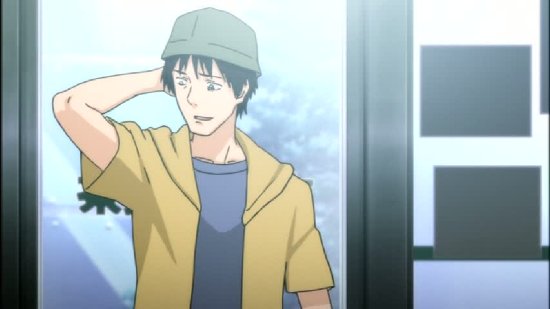
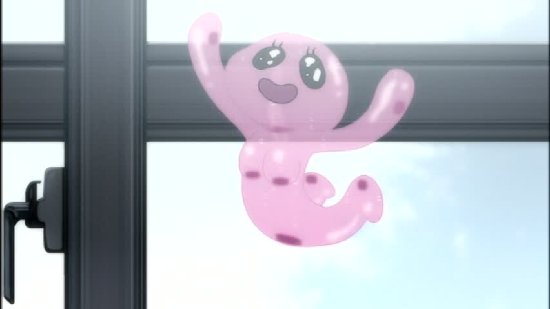
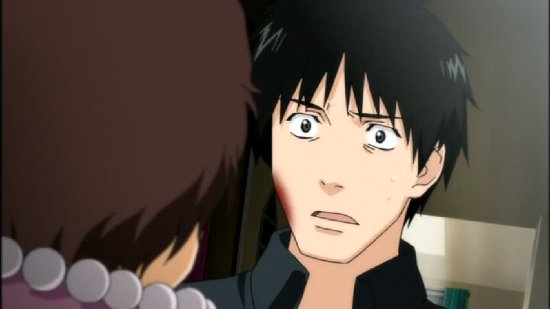

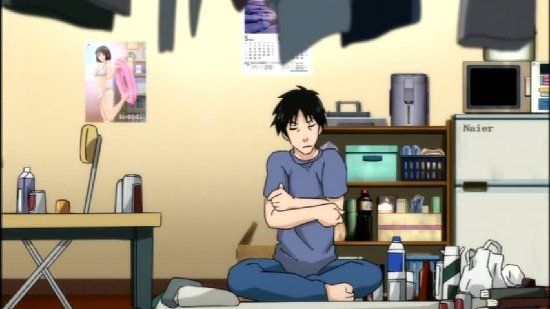
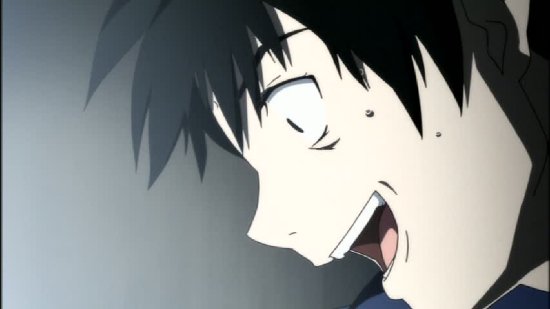
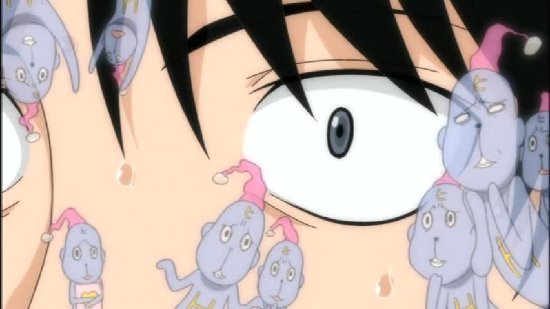
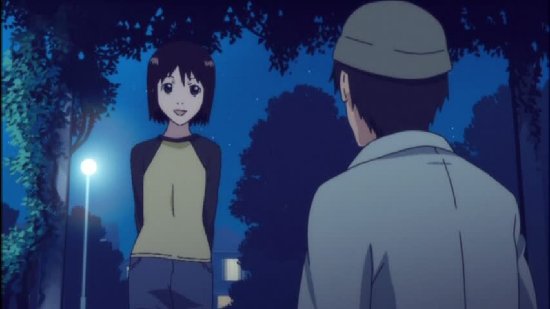
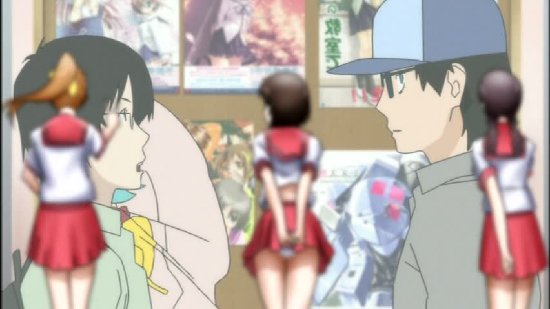
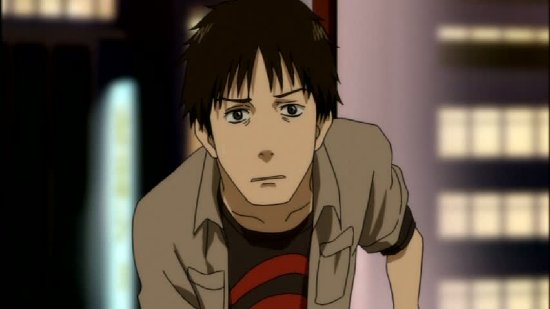
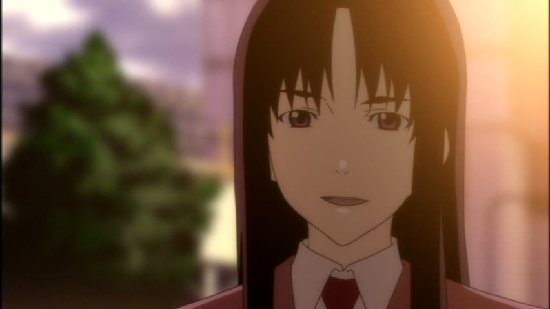
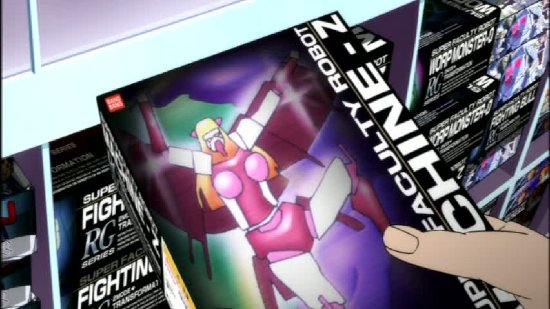
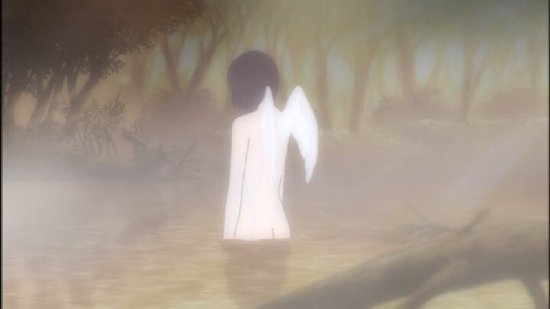
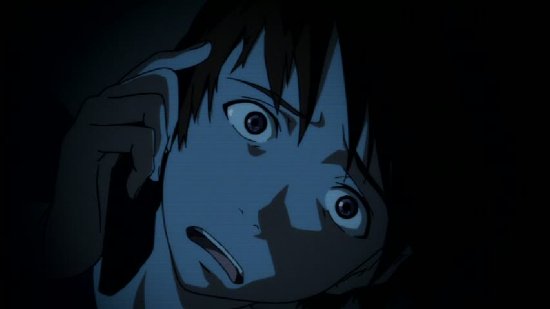
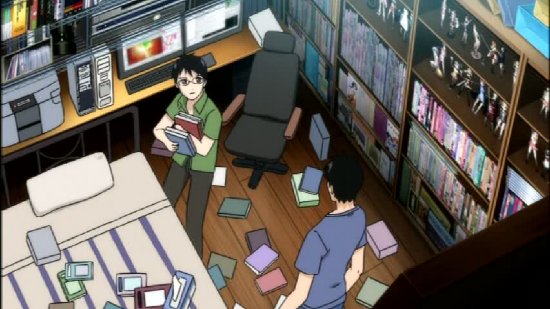
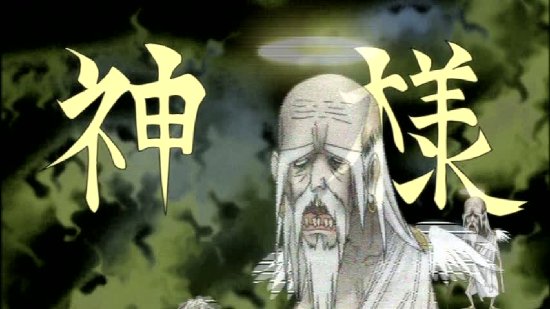
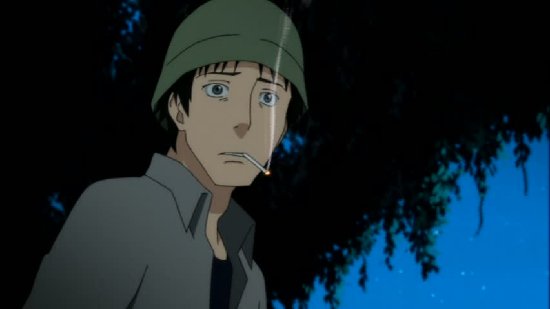
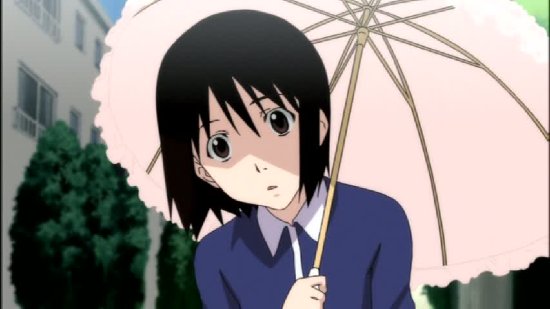
Your Opinions and Comments
Be the first to post a comment!